
A Brill classic now in paperback from SBL Press
This critical edition of the Life of Adam and Eve in Greek is based on all available manuscripts. In the introduction the history of previous research is summarized, and the extant manuscripts are presented. Next comes a description of the grammatical characteristics of the manuscripts’ texts, followed by a detailed study of the genealogical relationships between them, resulting in a reconstruction of the writing’s history of transmission in Greek. On the basis of all this information, the Greek text of the Life of Adam and Eve in its earliest attainable stage, is established.
Features:
- Illustrations of textual relationships and variants
- Indices for subjects, passages, words in the text, variants, and additions and revisions Full critical apparatus with relevant evidence from the manuscripts


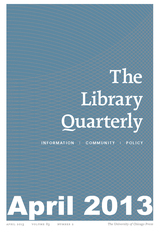

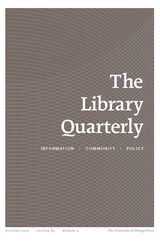









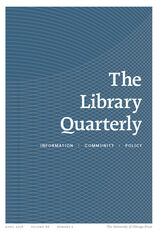

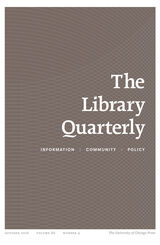





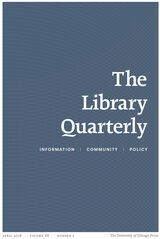
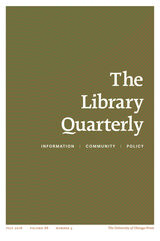

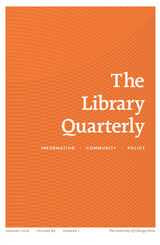
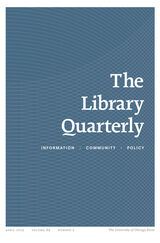


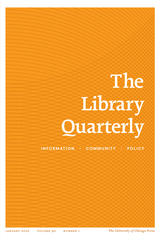
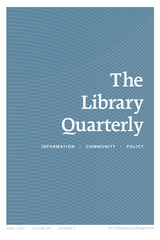
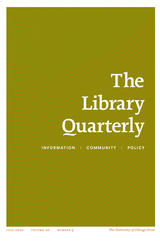

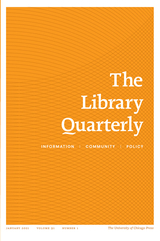

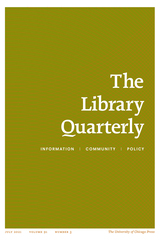
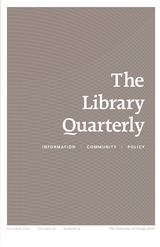
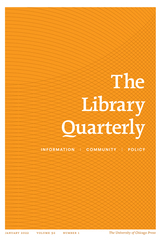
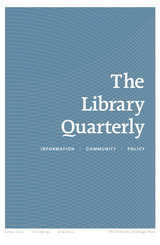
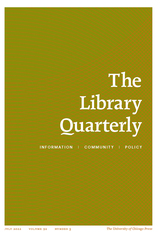
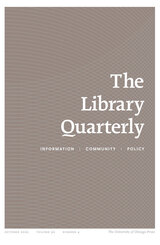
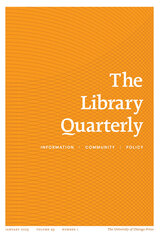
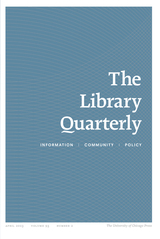
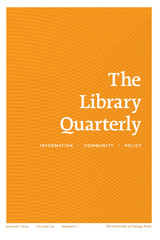

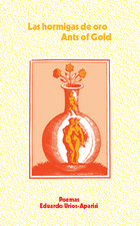

Although the two great commandments to love God and to love our neighbors as ourselves are central to Christianity, few theologians or spiritual writers have undertaken an extensive account of the meaning and forms of these loves. Most accounts, in fact, make love of God and love of self either impossible or immoral. Integrating these two commandments, Edward Vacek, SJ, develops an original account of love as the theological foundation for Christian ethics.
Vacek criticizes common understandings of agape, eros, and philia, examining the arguments of Aquinas, Nygren, Outka, Rahner, Scheler, and other theologians and philosophers. He defines love as an emotional, affirmative participation in the beloved's real and ideal goodness, and he extends this definition to the love between God and self. Vacek proposes that the heart of Christian moral life is loving cooperation with God in a mutually perfecting friendship.
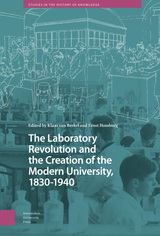
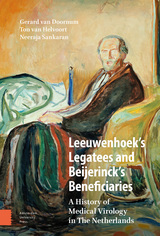

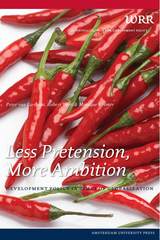
On some levels, the accepted role of development aid has been supplanted by the increase of individual remittances and foreign direct investment, as well as by policies that focus on issues such as climate, migration, financial stability, knowledge, trade, and security in order to increase opportunities in struggling countries. This study considers such changes and examines the effectiveness of aid and its role in international power relations. The editors and contributors close the book by proposing new strategies for development aid in the era of globalization.

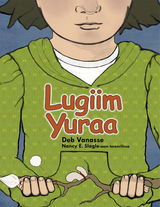
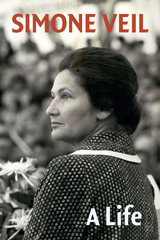
Veil was one of France’s most beloved public figures, most admired for her personal and political courage. Her memoir, published here in English for the first time, is a sincere and candid account of an extraordinary life and career, reflecting both her humanity and her determination to improve social standards at home and maintain economic and political stability in Europe. In the wake of her passing in 2017, this translation of her memoir stands as a fitting tribute to an unparalleled life of survival, selflessness, and unwavering public service.

Death is universal. It will meet us all. But it’s also a practical problem—what do we do with dead bodies? Vibeke Maria and Andreas Viestad live by a cemetery and are daily spectators of its routines, and their fascination with burials has led them to dig deep to examine our relationship with the dead. Taking us on a journey around the world and into the past, the Viestads explore how the deceased are honored and cared for, cremated, and buried. From archaeological sites in Spain, Israel, and Russia to environmentally friendly burials in the United States and Ghana’s fantasy coffins, and from cremations without fire to the new industry turning our dearly departed’s ashes into diamonds, this empathetic and enthralling book is for anyone who knows their turn is coming, but who’d like a good book for the journey.


Land and Sea was first published in 1978. Minnesota Archive Editions uses digital technology to make long-unavailable books once again accessible, and are published unaltered from the original University of Minnesota Press editions.
Although Philip Freneau is best known as the poet of the American Revolution, half his poems had nothing to do with the war, Professor Vitzthum points out, and this, the first systematic, in-depth study of Freneau's lyric poetry, provides a fresh perspective on the poet's non-political work. Demonstrating that there is a heretofore unrecognized pattern of land-sea imagery and symbolism in Freneau's best work. Professor Vitzthum traces changes reflected in this imagery to developments in the poet's thought, which in turn related to major intellectual and literary trends in revolutionary and early republican America. An introductory chapter assesses twentieth century biographical and critical estimates of Freneau, outlines the key themes in his work, and links his thirty-year career as sailor and ship captain to his creation of a covert, symbolistic poetic method. The following five chapters chronologically discuss Freneau's non-political poems from 1772 through 1815. Professor Vitzthum concludes that Freneau was not the derivative and unsuccessful artist he is currently thought to have been but, rather, one of America's genuinely important poets.
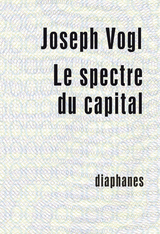

Le Capital de Sergueï Eisenstein (1927-1928) est un fantôme à plus d’un titre: bien que le film n’ait jamais été réalisé, il a néanmoins hanté l'imagination de nombreux cinéastes, historiens et écrivains jusqu’à aujourd’hui et même récemment avec les Nouvelles de l’Antiquité idéologique : Marx – Eisenstein – Le Capital d’Alexander Kluge. De plus, sa première matérialisation publique – un fragment d’une dizaine de pages issu des carnets du réalisateur – était marquée par ce qui demeurait absent : les images et le matériau de travail d’Eisenstein.
La Danse des valeurs ambitionne d’invoquer à nouveaux frais le fantôme du Capital mais en se fondant cette fois-ci sur l’ensemble de son corps d’archives. Cette « instruction visuelle à la méthode dialectique », selon les mots-mêmes d’Eisenstein, comprend plus de 500 pages de notes, de dessins, de coupures de presse, de diagrammes d’expression, de plans d’articles, de négatifs d’Octobre, de réflexions théoriques et de longues citations. La Danse des valeurs explore la nécessité formelle qui sous-tend les choix d’Eisenstein dans le Capital. Sa lecture fait valoir que sa complexité visuelle ainsi que son efficacité épistémique résident précisément dans l’état de son matériau : une danse de thèmes hétérogènes et de fragments disparates, un flux non-linéaire, provisoire et inarticulé.
Les séquences visuelles d’archives, publiées ici pour la première fois en France, ne sont pas bâties à titre de simples illustrations, mais en tant qu’arguments à part entière, donnant à voir ce qui se joue pour Eisenstein dans le Capital : une théorisation visuelle de la valeur. Une lecture des archives d’Eisenstein, dans leur logique interne, permet non seulement de reconstituer des éléments morphologiques présents dans le concept de valeur chez Marx, mais également de théoriser une crise plus fondamentale de la représentation politique, un présent qui s’étend de son contexte contemporain jusqu’à nos jours. Mettant en œuvre un procédé morphologique sans équivoque, les séquences de montage d’Eisenstein produisent une sorte de plus-value qui leur est propre, un excès sémiotique qui brasse les matériaux et présente les corps dans une danse analogue à la « danse » des « conditions pétrifiées » de Marx. C’est dans ce langage polymorphe et « diffus » – associé au stream of consciousness de l’Ulysse de Joyce – qu’Eisenstein perçoit le potentiel critique et affectif d’un cinéma à venir.

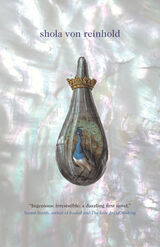

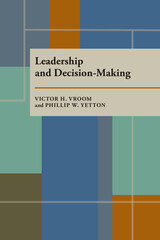
It has become a truism that “leadership depends upon the situation,” but few behavioral scientists have attempted to go beyond that statement to examine the specific ways in which leaders should and do vary their behavior with situational demands. Vroom and Yetton select a critical aspect of leadership style-the extent to which the leader encourages the participation of his subordinates in decision-making. They describe a normative model which shows the specific leadership style called for in different classes of situations. The model is expressed in terms of a “decision tree” and requires the leader to analyze the dimensions of the particular problem or decision with which he is confronted in order to determine how much and in what way to share his decision-making power with his subordinates.
Other chapters discuss how leaders behave in different situations. They look at differences in leadership styles, and what situations induce people to display autocratic or participative behavior.

Through his many critically acclaimed novels, stories, essays, plays, and memoirs, Kenyan writer Ngũgĩ wa Thiong’o has been at the forefront of world literature for decades. He has also been, in his own words, “a language warrior,” fighting for indigenous African languages to find their rightful place in the literary world. Having begun his writing career in English, Ngũgĩ shifted to writing in his native language Gikũyũ in 1977, a stance both creatively and politically significant. For decades now, Ngũgĩ has been translating his Gikũyũ works into English himself, and he has used many platforms to champion the practice and cause of literary translations, which he calls “the language of languages.”
This volume brings together for the first time Ngũgĩ’s essays and lectures about translation, written and delivered over the past two decades. Here we find Ngũgĩ discussing translation as a conversation between cultures; proposing that dialogue among African languages is the way to unify African peoples; reflecting on the complexities of auto-translation or translating one’s own work; exploring the essential task translation performed in the history of the propagation of thought; and pleading for the hierarchy of languages to be torn down. He also shares his many experiences of writing across languages, including his story The Upright Revolution, which has been translated into more than a hundred languages around the globe and is the most widely translated text written by an African author. At a time when dialogues between cultures and peoples are more essential than ever, The Language of Languages makes an outspoken case for the value of literature without borders.

Wagner explores what he calls “the reciprocity of perspectives” through a journey between Euro-American bodies of knowledge and his in-depth knowledge of Melanesian modes of thought. This logic grounds variants of the subject/object transformation, as Wagner works through examples such as the figure-ground reversal in Gestalt psychology, Lacan’s theory of the mirror-stage formation of the Ego, and even the self-recursive structure of the aphorism and the joke. Juxtaposing Wittgenstein’s and Leibniz’s philosophy with Melanesian social logic, Wagner explores the cosmological dimensions of the ways in which different societies develop models of self and the subject/object distinction. The result is a philosophical tour de force by one of anthropology’s greatest mavericks.

Embedded in a powerfully modulated sequence addressing a “you” who shifts in location and identity, many of these poems feel like forms of request, imploring. The speaker’s androgynous self-awareness — and wary attention to the gendered assumptions elicited by bodies — disclose in each poem a recognizable but disorienting (and pressurized) situation.
the lake has no saint will unsettle a reader’s sense of the certainty and stability of gender, as grammar and phrasing are also disrupted and blurred, often requiring us to read closely to hear where one sentence ends as another begins. Yet despite its formal and thematic iconoclasm, this is a book that clearly elucidates a story both heart-rending and ultimately — in its vatic honesty — triumphant.


The Alabama coal miners’ strike of 1894 to gain improved working conditions and to protect themselves from wage reductions. The authors recount the depression of the early 1890s, which set the stage for the strike, and the subsequent use of convict labor, which became a catalyst. The gripping story of the strike includes the dramatic decision to strike and corporate attempts to break the strike by the use of company guards and “scab” labor. In Alabama corporate bosses inflamed passions further by deploying African American “black leg” workers, ultimately requiring the deployment of the state militia to restore peace.


Live Wires explores how five key electronic technologies—the tape recorder, circuit, computer, microphone, and turntable—revolutionized musical thought. Featuring the work of major figures in electronic music—including everyone from Schaeffer, Varèse, Xenakis, Babbitt, and Oliveros to Eno, Keith Emerson, Grandmaster Flash, Juan Atkins, and Holly Herndon—Live Wires is an arresting discussion of the powerful musical ideas that are being recycled, rethought, and remixed by the most interesting electronic composers and musicians today.
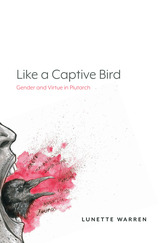
The full extent of Plutarch’s moral educational program remains largely understudied, at least in those aspects pertaining to women and the gendered other. As a result, scholarship on his views on women have differed significantly in their conclusions, with some scholars suggesting that he is overwhelmingly positive towards women and marriage and perhaps even a “precursor to feminism,” and others arguing that he was rather negative on the issue. Like a Captive Bird: Gender and Virtue in Plutarch is an examination of these educational methods employed in Plutarch’s work to regulate the expression of gender identity in women and men. In six chapters, author Lunette Warren analyzes Plutarch’s ideas about women and gender in Moralia and Lives. The book examines the divergences between real and ideal, the aims and methods of moral philosophy and psychagogic practice as they relate to identity formation, and Plutarch’s theoretical philosophy and metaphysics.
Warren argues that gender is a flexible mode of being that expresses a relation between body and soul, and that gender and virtue are inextricably entwined. Plutarch’s expression of gender is also an expression of a moral condition that signifies relationships of power, Warren claims, especially power relationships between the husband and wife. Uncovered in these texts is evidence of a redistribution of power, which allows some women to dominate other women and, in rare cases, men too. Like a Captive Bird offers a unique and fresh interpretation of Plutarch’s metaphysics which centers gender as one of the organizational principles of nature. It is aimed at scholars of Plutarch, ancient philosophy, and ancient gender studies, especially those who are interested in feminist studies of antiquity.
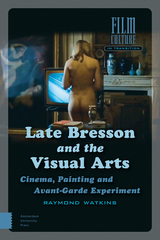



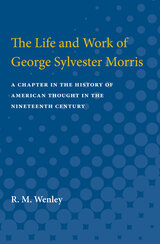


Stephen J. Whitfield makes the case for the pertinence of Brandeis University in understanding the vicissitudes of American liberalism since the mid-twentieth century. Founded to serve as a refuge for qualified professors and students haunted by academic antisemitism, Brandeis University attracted those who generally envisioned the republic as worthy of betterment. Whether as liberals or as radicals, figures associated with the university typically adopted a critical stance toward American society and sometimes acted upon their reformist or militant beliefs. This volume is not an institutional history, but instead shows how one university, over the course of seven decades, employed and taught remarkable men and women who belong in our accounts of the evolution of American politics, especially on the left. In vivid prose, Whitfield invites readers to appreciate a singular case of the linkage of political influence with the fate of a particular university in modern America.

Little Magazines - American Writers 32 was first published in 1963. Minnesota Archive Editions uses digital technology to make long-unavailable books once again accessible, and are published unaltered from the original University of Minnesota Press editions.

In recent years, as the author points out, there has been increasing interest in, and concern for, many aspects of landscape within British, European and wider contexts. This has included the study of the history, development and changes in our perception of landscape, as well as research into the links between past landscapes and political ideologies, economic and social structures, cartography, art and literature.
There is also considerable concern at present with the need to evaluate and classify historic landscapes, and to develop policies for their conservation and management in relation to their scenic, heritage and recreational value. This is manifest not only in the designation of particularly valued areas with enhanced protection from planning developments, such as national parks and world heritage sites, but in the countryside more generally. Further, Ian D. Whyte argues, changes in European Union policies relating to agriculture, with a greater concern for the protection and sustainable management of rural landscapes, are likely to be of major importance in relation to the themes of continuity and change in the landscapes of Britain and Europe.

A welcome link to the chain connecting the early masters of detective fiction.... The collection offers a window into the early days of American detective fiction and the power of deductive thinking."—Sarah Weinman, Los Angeles Times
"This story collection featuring New York City private detective James Brampton will intrigue Sherlock Holmes fans, given the number of eerie parallels between the two characters."—Publishers Weekly
"It is the observation of small things that makes a good detective, for it is often the most trivial circumstance which supplies the first link in the chain." —James Brampton
Twenty years before the Sherlock Holmes mysteries were written, a fictional New York private investigator was celebrated for his ability to solve crimes based on the principles of observation and deductive reasoning that later became Holmes' hallmark. Originally published in 1864 and never before reprinted, Leaves from the Note-Book of a New York Detective features twenty-nine cases of James Brampton, the first American detective hero to appear in fiction. The book opens with a chance meeting between a medical doctor, John Babbington Williams (the actual author of the stories), and detective James Brampton. They become acquaintances, and after Brampton has retired after twenty years of service, he sends his case notebooks to Dr. Williams to be edited and published. The result is a stunning collection of intriguing mysteries, including "The Defrauded Heir," "The Phantom Face," "A Satanic Compact," and "The Walker Street Tragedy." In case after case, using his power of observation, detective Brampton is able prove the innocence of the wrongly accused. Never before reprinted, this first modern edition of this important work now takes its place once more in the development of detective fiction between Edgar Allan Poe and Arthur Conan Doyle, the casebook of the original American detective hero.
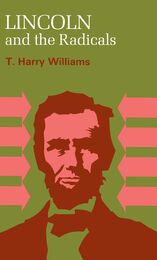


Contributors: Elise Bartosik-Vélez, Ralph Bauer, Rachel Conrad Bracken, Anna Brickhouse, John Alba Cutler, Kenya C. Dworkin y Méndez, Joshua Javier Guzmán, Anita Huizar-Hernández, Kelley Kreitz, Rodrigo Lazo, Marissa K. López, Claudia Milian, Yolanda Padilla, Juan Poblete, David Sartorius, Alberto Varon
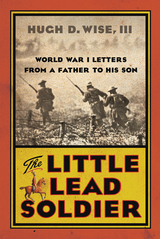
Arriving in France in April 1918, Col. Hugh D. Wise, commander of the U.S. 61st Infantry Division, held a precious object. It was a toy soldier given to him by his six-year-old son, Hugh, Jr. The boy had asked the little lead soldier to write him with news of his father. The colonel saw action in two of the most important campaigns the Americans fought, St. Mihiel and Meuse-Argonne, and the little lead soldier dutifully assured a boy thousands of miles away that his father was safe: “The men had been shelled, gassed, and raked by machine guns constantly: and undergone several intense bombardments; and made a difficult though successful attack; and had resisted a fierce counter-attack. They had dug trenches, moved, and dug again. All this time they had been without shelter, exposed to a cold driving rain and without warm food—They were wet, chilled, and tired when called upon for even greater efforts but they responded with the energy and spirit of fresh troops.” A treasured family heirloom, these wartime letters are presented for the first time along with letter from Colonel Wise to his wife, and engrossing historical context provided by his grandson, Hugh D. Wise, III. The Little Lead Soldier: World War I Letters from a Father to His Son is a remarkable story of how a father performed his dangerous duty while keeping a promise to his boy.

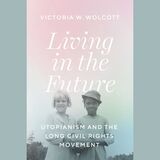
This is an auto-narrated audiobook edition of this book.
Living in the Future reveals the unexplored impact of utopian thought on the major figures of the Civil Rights Movement.
Utopian thinking is often dismissed as unrealistic, overly idealized, and flat-out impractical—in short, wholly divorced from the urgent conditions of daily life. This is perhaps especially true when the utopian ideal in question is reforming and repairing the United States’ bitter history of racial injustice. But as Victoria W. Wolcott provocatively argues, utopianism is actually the foundation of a rich and visionary worldview, one that specifically inspired the major figures of the Civil Rights Movement in ways that haven’t yet been fully understood or appreciated.
Wolcott makes clear that the idealism and pragmatism of the Civil Rights Movement were grounded in nothing less than an intensely utopian yearning. Key figures of the time, from Martin Luther King Jr. and Pauli Murray to Father Divine and Howard Thurman, all shared a belief in a radical pacificism that was both specifically utopian and deeply engaged in changing the current conditions of the existing world. Living in the Future recasts the various strains of mid-twentieth-century civil rights activism in a utopian light, revealing the power of dreaming in a profound and concrete fashion, one that can be emulated in other times that are desperate for change, like today.
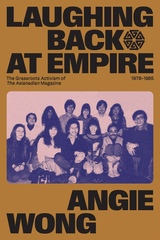


On the morning of December 4, 1972, the small north Alabama town of Scottsboro was shaken when a bomb ripped through the car of a prominent attorney. What followed were two years of unyielding
investigation resulting in the arrest of the town's wealthiest landowner. The trial that followed pitted Bill Baxley, a young, ambitious Alabama attorney general, against the state's most prominent lawyers.
Lay Down with Dogs is the story of a small southern town as it makes the transition from an agrarian hamlet to progressive New South suburbia. It is also the story of a twisted but powerful character, bent on revenge, whose motive was as enigmatic as the man himself. And it is the story of a young prosecutor, willing to risk a promising political future in order to pursue his sense of justice.
This book is not only a well-researched account but also a fascinating story of crime, the court, and the many characters brought together at one time and in one place to participate--for good or evil--in an unforgettable drama.

A Christian Science Monitor Best Nonfiction Book of the Year
“In his masterful new biography, Randall B. Woods convincingly makes the case for Johnson’s greatness—as the last American president whose leadership achieved truly revolutionary breakthroughs in progressive domestic legislation, bringing changes that have improved the lives of most Americans. In this compelling, massive narrative, Woods portrays Johnson fairly and fully in all his complexity, with adequate attention to flaws in his character and his tragic miscalculations in Vietnam.”—Nick Kotz, Washington Post Book World
“In writing LBJ: Architect of American Ambition, Woods has produced an excellent biography that fully deserves a place alongside the best of the Johnson studies yet to appear…Even readers familiar with the many other fine books on Johnson will learn a great deal from Woods…Among Woods’s many achievements in this fine biography is to allow us to see not only the enormous, tragic flaws in this extraordinary man, but also the greatness.”—Alan Brinkley, New York Times Book Review
A distinguished historian of twentieth-century America, Randall B. Woods offers a wholesale reappraisal and sweeping, authoritative account of the life of one of the most fascinating and complex U.S. presidents.


Late Quaternary Environments of the United States was first published in 1983. Minnesota Archive Editions uses digital technology to make long-unavailable books once again accessible, and are published unaltered from the original University of Minnesota Press editions.
In the late 1970s American and Russian scientists met twice in conferences on Quaternary paleoclimates sponsored by the U.S.-U.S.S.R. Bilateral Agreement on the Environment. The conferees agreed to prepare volumes summarizing the current status of research in the two countries. Late-Quaternary Environments of the United States provides a two-volume overview of new and significant information on research of the last fifteen years, since the 1965 publication of Quaternary of the United States,edited by H E. Wright, Jr., and D. G. Frey. The volume on the late Quaternary in the Soviet Union will also be published by the University of Minnesota Press.
Volume 1 of Late-Quaternary Environments of the United States covers the Late Pleistocene, the interval between 25,000 and 10,000 years ago—a time of extreme environmental stress as the world passed from full-glacial conditions of the last ice age into the present interglacial age. The interval of geologic time since the last glacial period—termed the Holocene—is the subject of Volume 2. The complexity of the natural changes occurring in the late Quaternary, and their interrelationships, make it impossible for a single scientific discipline to encompass them. Thus the papers in both volumes come from authors in many research fields—geology, ecology, physical geography, archaeology, geochemistry, geophysics, limnology, soil science, paleontology, and climatology. Many of the hypotheses presented—especially on the dynamic Late Pleistocene environments—are still hotly debated and will require additional testing as scientists strive to reconstruct the changing world of the glacial and postglacial ages.

A modern reframing of Friedrich Hayek’s most famous work for the 21st century.
Friedrich Hayek’s The Road to Serfdom was both an intellectual milestone and a source of political division, spurring fiery debates around capitalism and its discontents. In the ensuing discord, Hayek’s true message was lost: liberalism is a thing to be protected above all else, and its alternatives are perilous.
In Liberalism’s Last Man, Vikash Yadav revives the core of Hayek’s famed work to map today’s primary political anxiety: the tenuous state of liberal meritocratic capitalism—particularly in North America, Europe, and Asia—in the face of strengthening political-capitalist powers like China, Vietnam, and Singapore. As open societies struggle to match the economic productivity of authoritarian-capitalist economies, the promises of a meritocracy fade; Yadav channels Hayek to articulate how liberalism’s moral backbone is its greatest defense against repressive social structures.


Planned and designed by a leading Tokyo lawyer and several American practitioners and scholars, Law and Investment in Japan introduces both Japanese law and the strategic issues that arise in cross-border transactions. Centered around the details of an actual joint venture between the U.S. and Japan, the book combines materials from the transaction itself with cases, statutes, and background data.
This new second edition reflects recent changes in the law and new directions in scholarly research.

Starting with the earliest days of lamb and sheep farming in the ancient Middle East, Yarvin traces the spread of lamb to cooks in ancient Rome and Greece. He details the earliest recorded meals involving lamb in the Zagros Mountains of Iraq and Iran, explores its role in Renaissance banquets in Italy, and follows its path to China, India, and even Navajo tribes in America. Taking his story up to the present, Yarvin considers the growing locavore movement, one that has found in lamb a manageable, sustainable source of healthy—and tasty—protein. Richly illustrated and peppered with recipes, Lamb will be the perfect accompaniment to your next grilled chop or braised shank.

Young examines nine legends-Perseus and Andromeda; Demeter and Persephone; Pyramus and Thisbe; Pygmalion and Galatea; Daedalus and Icarus; Atlanta and Hippomenes; Philemon and Baucis; Echo and Narcissus; and Pomona and Vertumnus-explaining the legends themselves and tracing their dissemination through centuries and civilizations and across various art forms. In Young's view, classical mythology, through expressing humanity's enthusiasms, visions, and talents, might well be considered the “skilled midwife” of human civilization, proof of our constant effort to possess life symbolically and express it through arts.
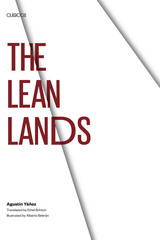
What was it that flew over with such a terrifying roar? Was it, as many said, the devil, or was it that thing a few had heard of, a flying machine? And those electric lights at Jacob Gallo’s farm, were they witchcraft or were they science?
The theme of this harshly powerful novel is the impact of modern technology and ideas on a few isolated, tradition-bound hamlets in the aftermath of the Mexican Revolution of 1910. The old ways are represented by Epifanio Trujillo, the cacique of the region, now ailing and losing his grip on things; by ancient Madre Matiana, the region’s midwife, healer, counselor, and oracle; by penniless Rómulo and his wife Merced. “Progress” is represented by Don Epifanio’s bastard son Jacob, who acquired money and influence elsewhere during the Revolution and who now, against his father’s will, brings electricity, irrigation, fertilizers, and other modernities to the lean lands—together with armed henchmen. The conflict between the old and the new builds slowly and inexorably to a violent climax that will long remain in the reader’s memory.
The author has given psychological and historical depth to his story by alternating the passages of narrative and dialogue with others in which several of the major characters brood on the past, the present, and the future. For instance, Matiana, now in her eighties, touchingly remembers how she was married and widowed before she had reached her seventeenth birthday. This dual technique is superbly handled, so that people and events have both a vivid actuality and an inner richness of meaning. The impact of the narrative is intensified by the twenty-one striking illustrations by Alberto Beltrán.
READERS
Browse our collection.
PUBLISHERS
See BiblioVault's publisher services.
STUDENT SERVICES
Files for college accessibility offices.
UChicago Accessibility Resources
home | accessibility | search | about | contact us
BiblioVault ® 2001 - 2024
The University of Chicago Press









